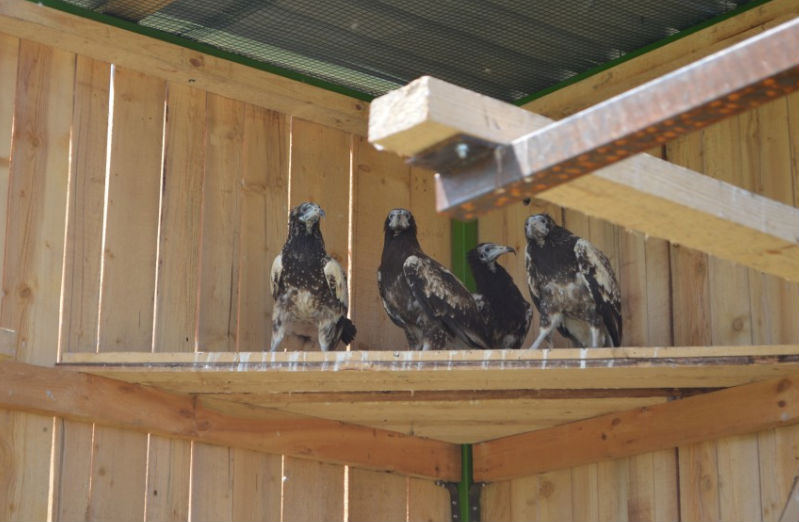The first egg of the season in the bearded vulture captive breeding network was laid yesterday at noon, by a female of the 6 breeding pairs that live in the Guadalentín specialized captive breeding center (Cazorla, Spain), run by the Junta de Andalucía.
This female first bred in 2008/09, and was very successful in the first few years, but suddenly it became aggressive towards its mate, and twice injured the male, until it was decided to separate definitively the pair. Last year she received a new, more dominant, male coming from the Vallcalent breeding center (Catalonia, managed by the VCF). Immediately pair bonding occurred and at the end of January a double clutch was laid (24th and 30thof January). This year the female advanced her laying date by 1,5 months.
Normally, bearded vultures lay their first eggs around Xmas, but it is well known that females which are breeding for the first time lay their first egg later than more experienced birds (see figure below). Our data shows that average date of arrival of the first egg in captivity is 30th of January (n=46). After their 5th breeding season the laying date is on average 29 days earlier (1st of January). Furthermore, from the fifth laying year onwards, the laying date for each female on average changes only ±5.77 days.
The bearded vulture captive breeding network (organised under an EEP program under EAZA – European Association of Zoos and Aquaria, and managed by the VCF) is a fantastic and rather complex collaborative effort between many people and organisations – and is at the base of the successful reintroduction projects that are restoring the populations of this species across its former range (Alps, Grands Causses and Andalucia). As part of this coordination, the VCF provides technical support and targeted coordination to zoos, animal parks, and the specialized captive breeding centres holding bearded vultures, always trying to maximise the establishment of new pairs, improving the husbandry, reducing mortality, and improving breeding productivity.
Figure: The temporal distribution of the date of egg-laying in female bearded vultures (n=46) over their first 27 reproductive cycles.




